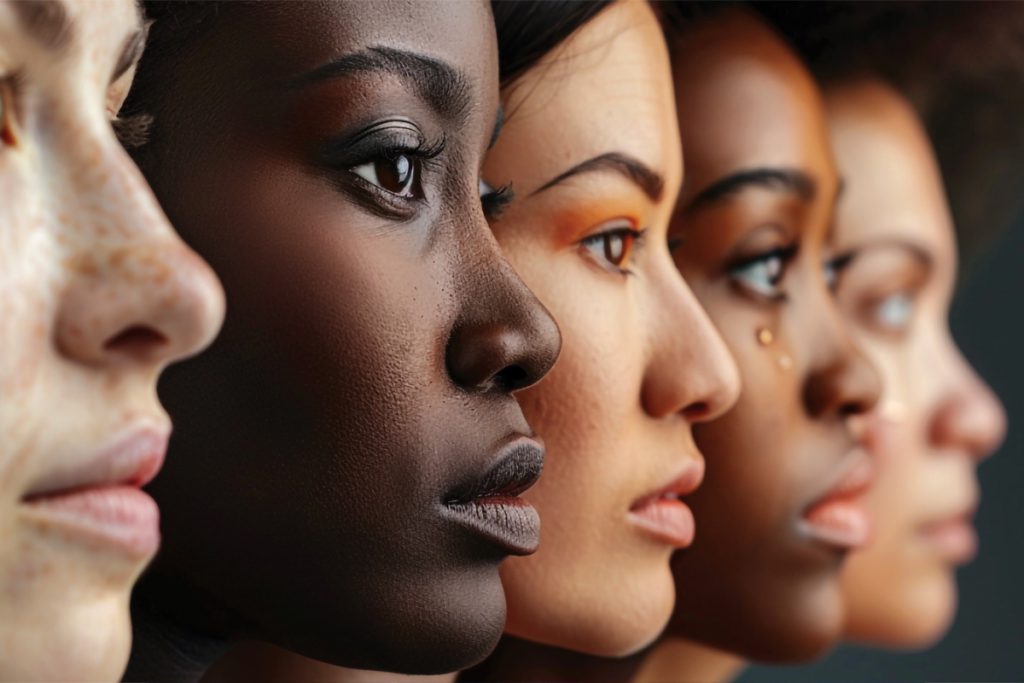Words by Nandini Sarkar
At the outset, a caveat; this is an expression of individual perspective using experience earned and learnings acquired along the course of my professional journey. I’d like to examine this topic through pause, reflection and new perspective. I’m attempting to bring on simplistic thought models, easier for wider resonance across varying DEI maturity levels.
I’ve examined this topic through pause, reflection and new perspective with a holistic lens.
DEI through my lens
Nature in all its creations thrive in diversity, leaving no room for exclusion anywhere. On the face of survival and resilience in harsh environments are the creatures with unique and diverse capabilities coming together to collaborate with each other. Think symbiosis and co-existence. Human existence too works in the same way. Looking back into our inevitable past, phenomena like industrialization and many ‘isms’ changed the way we look at people who are different than us.

For close to a century we know certain section of people had no access to education and/or career opportunities, who caught in the web of such circumstances became marginalized and a minority. Workplaces wanted to hire people who fit in their preset scheme of things and the ‘others’ remained unwelcome. The gap widened through times.
Diversity is in nature, inclusion is an intentional nurture, equity is an approach, and equality is the outcome, that fosters a sense of true belonging.
Creating a sense of belonging requires intentional and consistent inclusive DEI practices in the workplace. Belonging describes employees’ perceptions of how they fit in with their team, how comfortable they are expressing their ideas, whether they’re able to fully participate in the work environment and have equitable access to growth opportunities.
The basic condition for individuals to perform and be at their full potential, needs them to feel truly included, respected for who they are, and valued for what they contribute to the workplace. They must first feel a sense of connection and acceptance with their colleagues, which aligns with the fundamental human need to belong as defined in Maslow’s Hierarchy of Needs.
DEI is an organizational framework that seek to promote fair treatment and full participation of all people, including groups who have been underrepresented or have been historically marginalized in lieu of their unique and diverse identities.
Workplaces actively promote visible diversity in their workforce to attract a wider talent pool, improve employee morale, and benefit from diverse perspectives and ideas. In that light, Gender inclusion is predominantly a common DEI focus area across workplaces, followed by shared spotlight on Gender Identities; and Disability inclusion with some progressive workplaces calling out neurodiversity within the scope. Today, the dominant generation within the talent pool is Generation Z who are the largest cohort entering the workforce and bring in strong inclination towards technology, flexibility and purpose driven work. All of this has propelled in widening of DEI focus areas to encompass Generations at work and Culture.
Lens on the future of workplace inclusion with 360-degree DEI view and Culture Building
Be sure your inclusion efforts are authentic
Pushing DEI initiatives without deep cultural buy-in at all levels of the workplace, at the paradigm level, is not sustainable. It is important for all leaders to understand the importance and value of DEI to their organization and champion this value amongst employees internally and with clients and other stakeholders externally. Strategic intent to meaningful impact requires all arms of implementation to come together to make it operational on ground.
Be sure your inclusion efforts address systemic inequities
Inclusion as an experience is palpable when it addresses systemic inequities to level the playing field for all people with diverse and intersectional identities to have equitable access to opportunities in the workplace.
Be sure you focus on Intersectionality
Besides visible dimensions, Intersectionality will act as a critical lens to understand and address the complex experiences of people with multiple marginalized identities, ensuring that inclusion initiatives are truly inclusive and effectively address the unique challenges faced by individuals with their intersecting identities like gender, gender identities, ethnicity, and disability et al thus paving the way for a more equitable and welcoming work environment for all.
Be sure to co-create a safe place
When we talk safety at workplace, we mostly mean physical safety. We need to bring on psychologically safety as a critical workplace need to promote speak up culture, that builds safe spaces for voices of underrepresented and marginalized people to be heard where there’s no fear of judgement or retaliation.
Be sure to promote workplace flexibility
True inclusion requires intentional efforts to ensure all team members, regardless of their physical location, feel connected, valued, and heard. It’s a reminder that inclusion is a culture that needs nurturing and adaptation as our work environments evolve.
Be sure your inclusion efforts meet continual improvement
DEI is not one-size-fits-all. Gathering external benchmarking data and learning from best practices are great ways to be on the DEI journey. However, it’s very critical to reflect inward to gather internal quantitative and qualitative benchmarking data at set frequency to inform one’s workplace inclusion needs in shaping a sustainable culture of innovative inclusion practices.

Be sure to measure inclusion efforts without missing to humanize data
While workplaces today are flush with data and analytics, it’s the context added around qualitative and quantitative data points that truly extract the insights needed to make human-centric business decisions.
Be sure to use technology to build inclusion
- The proper application of technology emerges as a super important driver for promoting inclusion. Adaptive software and devices, often known as assistive technologies, have the power to break down barriers, providing equitable opportunities for everyone.
- Wherein data is record of the past that offers us patterns, using AI and predictive analytics will offer us a huge advantage in building inclusive workplace practices in the future forward mode.
- Technology is to be utilized to identify and address unconscious bias in hiring and promotion practices, as well as provide personalized learning opportunities to promote inclusion.
Be sure to connect inclusion efforts to mental health needs
In this era marked by unprecedented global challenges, mental health remains a key issue affecting individuals across diverse ages, cultures and backgrounds. When we talk about inclusion in mental health, it’s to normalise mental health challenges at workplace and particularly to ensure that mental health services, support, and education are accessible and relevant to people from all walks of life, acknowledging and respecting their varied backgrounds, experiences and intersectionality.
Be sure to map inclusion efforts to future of customers
Rapidly changing customer identity present both challenges and opportunities for the businesses. B2C, B2B, and nonprofits alike can look to prosper by adapting their products, services, and experiences to engage the customer of the future. Inclusion is not only critical to making the case for DEI internal to workplace today, but also key to engaging the customer of the future. Here’s the why –
- Intersectionality continues to grow in importance which emphasizes the growing complexity of consumer identity and the need for customer-centric approaches to DEI
- Global consumers are increasingly emphasizing accessible content and language inclusivity.
- Today’s consumers expect personalized experiences, customization options, and brands aligned with their DEI values
- Customers are increasingly prioritizing social responsibility and value
- Online campaigns with better representation generate higher recall
The future of inclusive workplace looks at avoiding the vicious cycle of misalignment between employee and customer-facing inclusion meaning strategically engaging, investing in, and aligning with customer-centric DEI practices.
Be sure to map inclusion efforts beyond compliance needs
A great example here is EEO (Equal Employment Opportunity) policy and DEI which are often seen through same lens, while both aim to create fair and inclusive work environments they serve very different purposes. Let’s see how.
| EEO… | DEI… |
| Is the foundation to prevent discrimination in workplace and working conditions | Is the blueprint for creating long-term success. |
| Is a compliance need, that prescribes penalties in case of non-compliance. | Is beyond compliance. It’s an intentional business strategy for competitive advantage that correlates to innovation |
| Is reactive i.e. employees file complaints when they they’ve faced discrimination. And is about legal protection | Is proactive and smart. And is about culture transformation |
| Is about meeting the bare minimum legal standards, warding off | Is about creating inclusive ecosystem to attract and retain high performing teams, to advance sustainable business growth |
It’s important to understand that compliance alone is not enough, as a workplace may have:
- zero discrimination cases and still have a toxic, non-inclusive workplace
- various legislative provisions to comply with conditional to the ecosystem it operates in
Inclusion is not just a buzzword; it’s a competitive advantage in today’s rapidly evolving business landscape. Workplaces that look to prioritize equity and inclusion will enjoy increased innovation, creativity, employee and customer satisfaction. That in turn will impact business performance indicators (both financial and non-financial).
The future of workplace inclusion is likely to see a heightened focus on integrating diversity and inclusion into core business strategies, leveraging technology to personalize experiences, prioritizing leadership training on inclusive practices, and actively addressing systemic barriers to create a truly equitable environment for all employees, with a particular emphasis on neurodiversity and intersectional identities.
A “culture of DEI” in the future workplace signifies an environment where diversity, equity, and inclusion are deeply ingrained in all aspects of company operations, actively promoting a sense of belonging and value for employees from all backgrounds, with a focus on addressing systemic barriers and fostering an inclusive culture for optimal innovation and productivity.
Nandini Sarkar is the Global Leader of Diversity 360 Culture and Belonging at Hitachi Energy.


